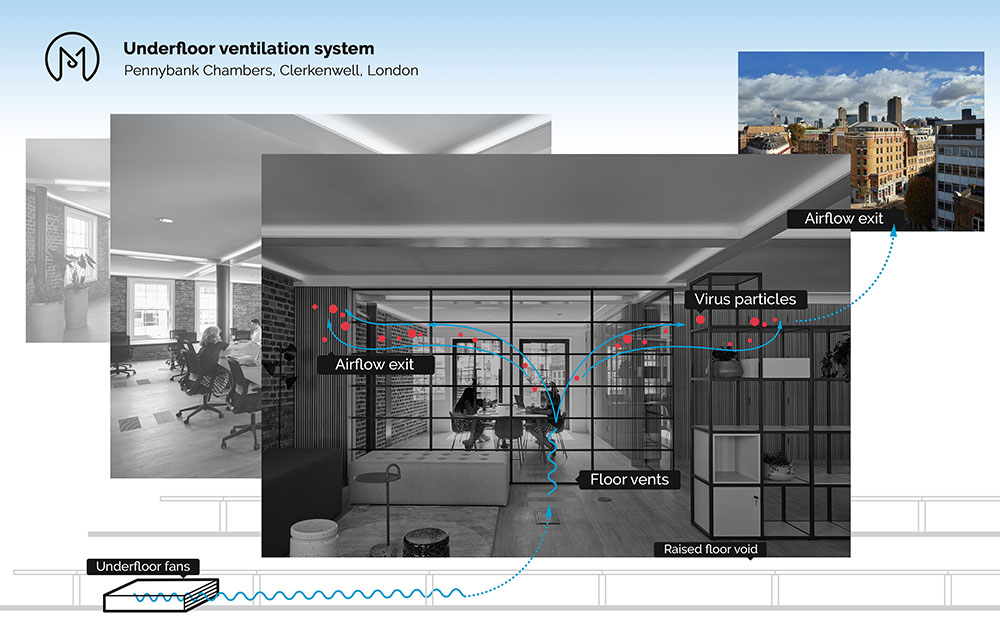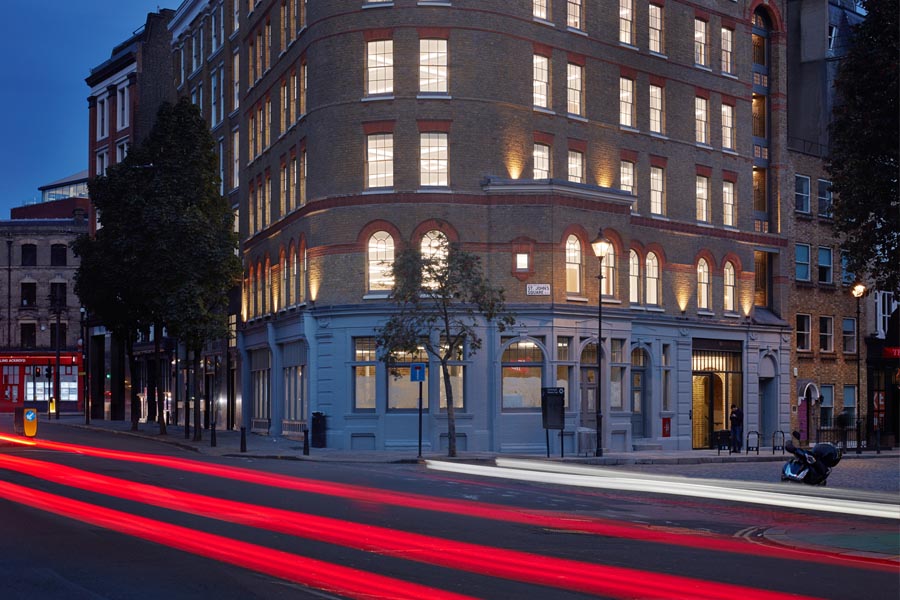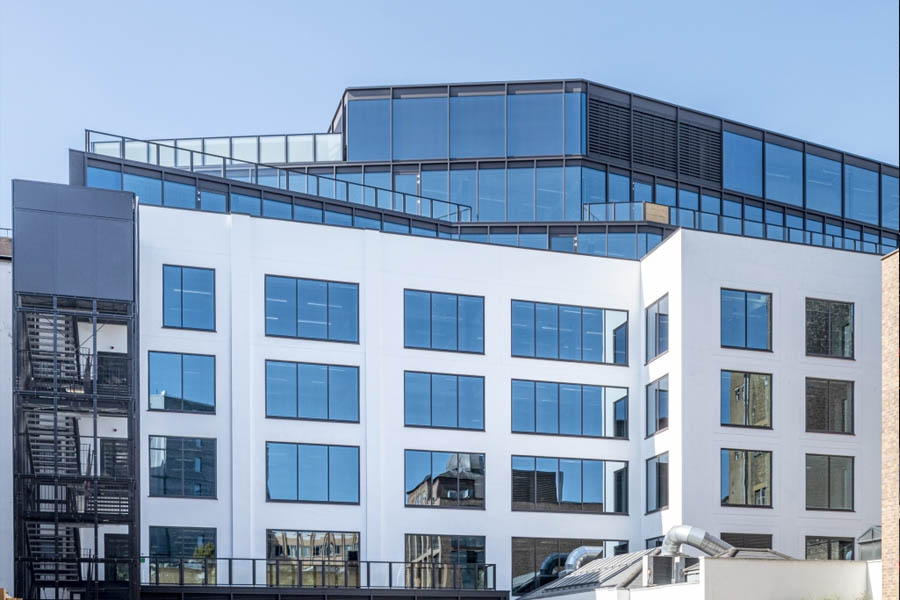Why is ventilation important to reduce COVID transmission?
Ventilation removes stale air from a space and replaces it with clean air. It dilutes contaminants, reducing concentration of virally charged particles and can therefore reduce transmission risk of coronavirus and other air-borne pathogens, improving occupancy health and productivity.
It’s long been known that fresh air is good for us. Working from home, many of us have the freedom to open windows as we please and ventilate our own spaces. But, as the second national lockdown ends and we see people go back to work in shared spaces, a big question on the minds of many will be: ‘Am I safe at work?’ In some buildings, windows cannot be opened, so natural methods of ventilation cannot be used.
Recent news of success in COVID-19 vaccine trials could not have come soon enough, but we need to create environments where we are in a stronger position to reduce transmission risk of any further strains of SARs or other infectious diseases.
When we first became aware of SARS-CoV-2 (the coronavirus), there was concern it was transmitted by fomites – virally-charged particles on surfaces. This led to many of us washing down our shopping with bleach sprays and opening doors with our elbows. The latest research suggests that surface transmission from inanimate objects is ‘unlikely to be a major route of transmission’.1
Time has moved on and so has our understanding of this devastating virus. It is generally agreed by the scientific and medical community that the main route of coronavirus transmission is by respiratory droplets (larger droplets and particles which are exhaled when people cough, sneeze, sing, talk or breathe), which are passed on through close contact with an infected individual. Transmission by these larger respiratory droplets is usually within 6 feet, hence the 2m social distancing rule.
However, it is now thought that COVID-19 can also be spread through exposure to virus-containing respiratory droplets made up of smaller droplets and particles that can remain suspended in the air over long distances – usually greater than 6 feet – and for a longer time. These smaller droplets are known as aerosols.
In July 2020 a large group of over 230 scientists from around the world supported a statement, published in the Oxford Academic, to address airborne transmission of COVID-19 and stated the provision of ‘sufficient and effective ventilation‘2 as a primary measure for mitigating airborne transmission risk. The World Health Organisation (WHO) have now updated their guidance on how COVID-19 is transmitted to include aerosol transmission. Social distancing and handwashing have been shown to be effective in prevention of COVID transmission by inhaling respiratory droplets from an infected individual but, as aerosols are smaller than respiratory droplets they can travel further and don’t normally fall to the floor within 2m.
Outdoors, this is not so much of a problem, as long as we all continue to keep our distances from each other, as fresh air will dilute and disperse any virally-charged particles. But it is indoors where this mode of transmission puts us all at higher risk of contracting COVID-19. On 5th October 2020 the CDC (Centers for Disease Control) also updated their web resources to cover airborne transmission as a potential route of infection.
Aerosols can travel much further than larger respiratory droplets and tend to follow airflow. Simply opening windows and doors can ‘dramatically increase air flow rates in many buildings’2 allowing fresh air to enter indoor spaces and reduce the concentration of virally-charged particles. In summer, opening windows and doors to ventilate a room (where possible) is part of our natural behaviour, but, as we approach winter and the outside air is a lot cooler than inside air, people tend not to ventilate spaces in this way as much. It is worth noting that, as cool air will move to a space where there is warmer air and the differential between the two temperatures affects the speed of molecule travel, windows only need to be opened a little to allow air to come in from the outside and dilute air inside.
This winter we’re all being encouraged to keep windows ajar where possible and it’s expected that company dress codes will be relaxed as extra layers may be needed to remain comfortable.
In larger rooms or those where windows cannot be opened (for example, due to danger to those outside, security risk or too much noise), air conditioning (AC) is used to ventilate rooms. However, AC only ventilates when the air it brings back into a space has been mixed with fresh air; if the AC simply recycles the same, stale air and a person in the room has the virus, every time they breathe and talk (or shout, sing and sneeze) the air in the room will become more concentrated with virally-charged respiratory droplets and aerosols. If the air isn’t being freshened with clean air, over time (say, a working day) there will be a higher and higher concentration of these particles in the air and co-workers will be at higher and higher risk of infection. The first evidence of transmission of COVID in this way came from a restaurant in China which was full of people celebrating the Chinese new year. One infected individual (who had travelled from Wuhan) infected many others in the space of a few hours, some of whom were sitting over 2m away. The path of transmission followed the airflow from the AC unit that was recycling air in the room, with no fresh air delivered to the patrons. 3

Good ventilation increases the amount of oxygen in a space, reduces risk of transmission of infectious diseases and can add to a company’s bottom line as employee productivity is increased and absenteeism reduced.
While we await the roll out of the coronavirus vaccine, we can take steps to reduce its transmission and reduce the infection rate of any future strains of SARs or other viruses, such as flu and the common cold, all of which impact our health and productivity. An effective way of doing this is by improving the ventilation of our buildings.
—
To find out more about the services we offer and how we can help you make your building healthier, please call us on: 020 7183 3943 or email: info@milieuconsult.com
—
Sources
-
https://www.thelancet.com/journals/lanres/article/PIIS2213-2600(20)30514-2/fulltext
-
https://academic.oup.com/cid/advance-article/doi/10.1093/cid/ciaa939/5867798
-
https://wwwnc.cdc.gov/eid/article/26/7/20-0764_article
-
https://english.elpais.com/spanish_news/2020-06-17/an-analysis-of-three-covid-19-outbreaks-how-they-happened-and-how-they-can-be-avoided.html
*Research sources used by Milieu to develop Toolkit:
https://www.gov.uk/government/news/new-film-shows-importance-of-ventilation-to-reduce-spread-of-covid-19
http://web.mit.edu/bazant/www/COVID-19
https://cires.colorado.edu/news/covid-19-airborne-transmission-tool-available
https://www.cibsejournal.com/technical/calculated/
Pennybank Chambers | Clerkenwell
This retained façade refurbishment project regenerates a six storey office building in Clerkenwell within a conservation area to provide contemporary commercial office space.
The Hickman | Whitechapel
The existing building was at the end of its economic life in Tower Hamlets. It has been significantly remodelled, whilst retaining the existing warehouse building structure at the lower levels and adding a new core and 3 story extension.




